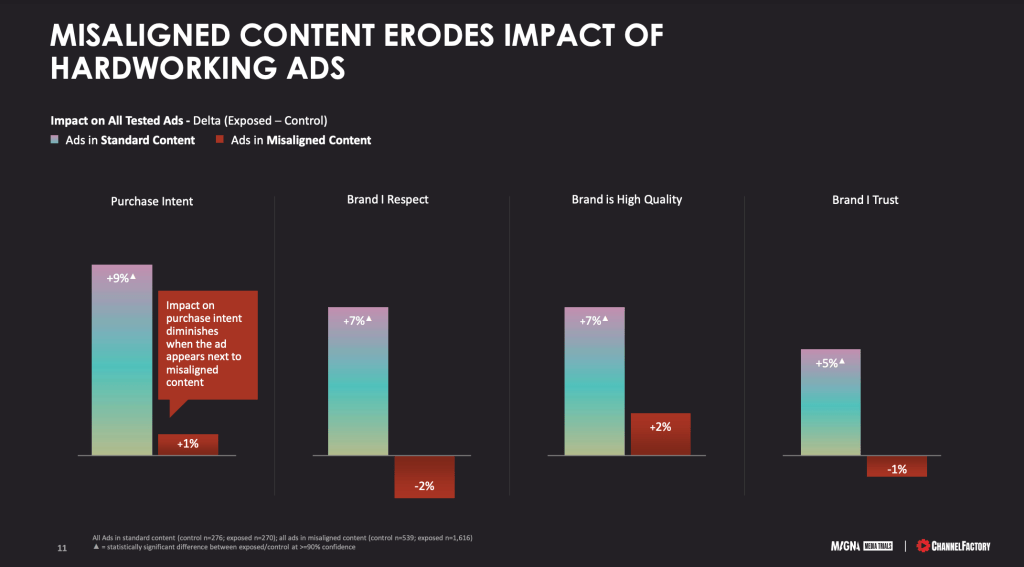By Chris Powell, Published by The Message
Ads that appears alongside “misaligned content,” a broad term that can include everything from pimple popping to ASMR videos, can see effectiveness reduced and leave consumers with a negative impression of a brand, according to a new research study from Magna and Channel Factory.
While brands are focused on safeguarding against appearing alongside unsafe or harmful content,The Proximity Effect: Quantifying the Impact of Misaligned Content in the Wild West of Video, says that running alongside safe but otherwise misaligned content can have negative repercussions.
The study recruited 2,700 users of popular mobile video apps offering different environments, who were shown ads for brands including T Mobile, Nationwide Insurance alongside both standard video content and content that commonly produces a “visceral” reaction among people. This included pimple popping, ASMR and mukbang videos (which show people eating vast amounts of food).

Ads appearing alongside the misaligned content saw pronounced drops in everything from purchase intent (-8%), to brand respect (-9%), perception that the brand is high quality (-5%) and brand trust (-6%).
Consumers also tended to have greater recall of brands that appeared alongside misaligned content more than standard content: 29% unaided recall for misaligned, versus 22%. Yet they remembered the brand for “all the wrong reasons,” with negative impacts on both perceptions of brand thoughtfulness and caring about customers.
“To avoid diminishing the effectiveness of otherwise powerful ads, brands need to pay just as much attention to content misalignment as they do to unsafe content when it comes to ad placement,” said Kara Manatt, Magna’s SVP, group director, intelligence solutions.
The study also shows that brands are walking a tightrope when it comes to placement in those online video environments. While nearly two-thirds of respondents (65%) deemed the misaligned content as “appropriate,” only 41% said it was appropriate for a brand.
When pushed to answer why the content was inappropriate, responses included: “Because it’s too weird to associate with,” and “I wouldn’t want my ad to come on after something like that in fear of what people will reference my ad with.” For consumers it’s clear cut, the study said: Brands should not be aligned with certain types of content.
This content over-indexed on metrics such as “a guilty pleasure,” “triggering” “embarrassing,” “not safe for work,” but under-indexed on “premium,” the study found. And while 64% of people watched all or most of a standard video, that number dipped only slightly (to 61%) for videos likely to produce a visceral reaction, with 68% of respondents saying the video was entertaining.
The study also found that brands are more likely to be penalized for ads appearing alongside misaligned content in a pre-roll environment versus a video card presence, with consumers 1.5X times as likely to feel that a brand endorsed misaligned content in the former.
The biggest concern in video card environments is ads appearing immediately before misaligned content, producing negative impacts on brand favourability and the perception that the brand is high quality. It also had a marked impact on brand recommendation.
“Ad effectiveness is only as good as the content it’s running in,” the study concludes. “Brands need to be equally proactive about content misaligned with brand values as they are unsafe content, to avoid diminishing the effectiveness of otherwise powerful ads.”

